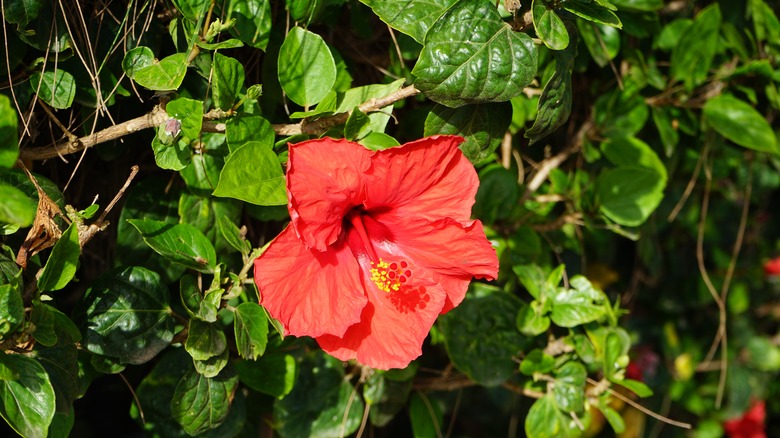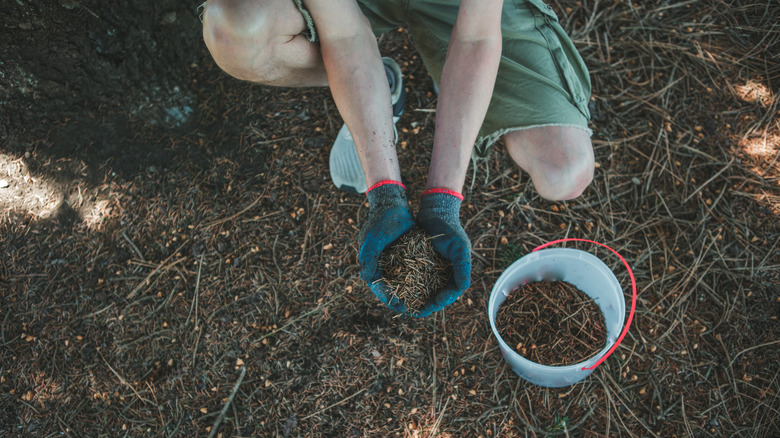Tips For Keeping Your Hardy & Tropical Hibiscus Plants Thriving Through Winter
We may receive a commission on purchases made from links.
Though they both produce beautiful flowers, there's a difference between hardy and tropical hibiscus plants and how you should prepare them for the winter. While hardy plants can handle winter temperatures down to -20 degrees Fahrenheit, tropical plants begin to suffer when the temperature drops below 50 degrees. Because of this, helping them thrive through the winter will look different, and your local climate will also impact how you care for the plants.
For those with hardy hibiscus plants, you'll want to keep them outside in your garden; however, you'll need to do some maintenance to help your plant through winter and provide a protective covering. On the other hand, you might need to take your tropical hibiscus inside for the winter to keep it thriving if you live in a place where it will consistently be colder than 50 degrees. If your tropical hibiscus is already potted, spray it with water and treat the plant with a bit of Natria Neem Oil Spray to kill any insects, then can bring your flowering shrub inside. Plants that have already started to go dormant should be placed in a cooler area of the home with less light and only be watered occasionally to keep the soil from totally drying. Otherwise, your tropical hibiscus may continue to flower throughout winter if brought indoors before temperatures drop. In this case, set your plant in a sunny, warm area of your home and keep the soil moist. Tropical plants in the ground should be transplanted to a pot and relocated.
Overwintering hardy hibiscus
While tropical hibiscus can simply be moved indoors and continue to produce gorgeous flowers throughout winter, hardy hibiscus should remain outdoors. However, it will need some help to make it through the cold season. Before the first frost arrives, give your hibiscus a very thorough watering to help the roots retain moisture for winter. Now, leave your plant alone as the weather continues to get colder. The leaves of the plant will die back as the temperatures drop, but this is normal. After it's stopped dying back, you'll want to prune the hibiscus plant in your garden. Trim the stems so that they are only 6 to 8 inches taller than the soil.
Now, you can add some cover to help protect your plant from the wind. While hardy hibiscus can handle the cold, these plants struggle with the lack of moisture in the winter air. Place a layer of mulch around your shrub so that it's about 10 inches thick. Pine needles and straw can work well for this, but if mulch isn't enough, you might want to cover the plant itself. You could lay burlap over the hibiscus or use a MIXC Plant Cover Freeze Protection shrub jacket to keep the cold, dry air away from your plant. You'll likely only need to do this if the weather is extremely bitter and there's not much moisture in the air. When the soil warms up to 70 degrees in the spring, your hardy hibiscus should start showing new growth.

